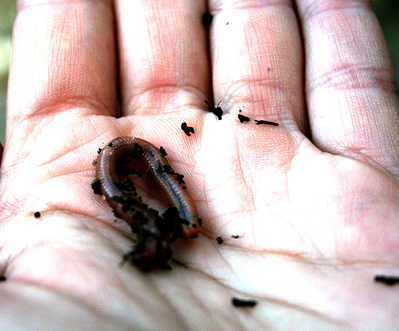Courtney Hampton
Staff Writer
One day, blood cells will be altered to create a kidney.
This is the hope of Professor Joel Rothman of the University of California Santa Barbara, who has unlocked the key to change a cell from one function to another by examining how the embryo of a C. elegans worm switches to develop intestinal cells. His findings were published in the Nov. 1 issue of Genes and Development, a biweekly interdisciplinary science journal.
The study outlines how cells decide what function they will take on—for example, a heart cell—and when and how they can switch from one function to another. Rothman hopes that the discoveries made in his study can be used to generate replacement cells, tissues or even organs.
“We all start as a fertilized egg and that fertilized egg is one cell type, but it has the ability to make all of the different cell types, all of our parts,” said Rothman. “It can unfold and create a heart, a kidney, a liver, a brain, hair, and skin. From that one cell to an adult, there are lots of specializations along the way.”
The professor of the Department of Molecular, Cellular, and Developmental Biology collaborated with Ph.D. student Nareg Djabrayan, Ph.D. student Erica Sommermann and postdoctoral fellow Nathaniel Dudley.
The California Institute of Regenerative Medicine and the National Institutes of Health funded the $500,000 project. Experiments performed on C. elegans in the past nine years have resulted in six Nobel prizes.
As an undergraduate and graduate student, Rothman studied biochemistry, which examines living organisms by breaking them down to their chemical functions. As his studies continued, he began to examine these processes more holistically. Sommermann experienced similar curiosities.
“How does a multi-cellular organism arise from a single cell, i.e. the fertilized egg?” said Sommermann in an email interview. “How does that single cell know when to divide, and how do the daughter cells that arise know what to become? What is controlling this process of embryonic development?”
Rothman described the process of cell specialization as analogous to train tracks. In order for a train to reach its destination, it must continue down its track by switching its direction at junctions. As a parallel, a cell must continue along a path of proteins to have it differentiate to its final cell type.
Rothman gives the example of embryonic cells developing into a mass of intestinal cells.
“Normally that switch only turns on the railroad track headed toward becoming intestine,” said Rothman. “Now we can turn that switch on all cells—not only on the track already heading there, but all cells that normally go elsewhere, like the heart and the muscle. So instead of getting a normal embryo in a worm, we get an entire embryo turning into intestines.”
However, these switches can only be made early on in the embryo’s development. Early when embryos are formed, cells have the capability to make any switch until they have “committed” to a certain cell type.
“What we found is a way we can unlock cells, that we can break that commitment,” said Rothman.
In order to divert a cell’s development, the communication between cells telling them what kind of cell they should develop into must be interrupted. This communication is called Notch signaling. By breaking the Notch signaling, cells were able to switch functions much later in their development.
Rothman hopes that scientists will be able to unlock any type of cell and turn it into any other type. Because of this, Rothman explained that if a person needed a new kidney, the patient’s blood cells could be cultivated and switched into kidney cells or a new organ.
“I am confident that we will be able to grow replacement parts,” said Rothman. “The beauty of the approach is that it will be perfectly matched to you because it will be your own cells. You won’t reject the tissue.”
According to the U.S. Department of Health and Human Services, 116,623 people in America are waiting for an organ and 18 people die each day waiting for an organ.
Rothman’s discoveries may not only save lives, but may extend life expectancy.
“We’re going to be able to replace the stuff that goes bad, just like you replace parts in a car,” he said. “It’s like being able to have an infinite supply of car parts.”
This innovation is all thanks to a few curious minds and one little worm.
Photo Courtesy of Vancour










